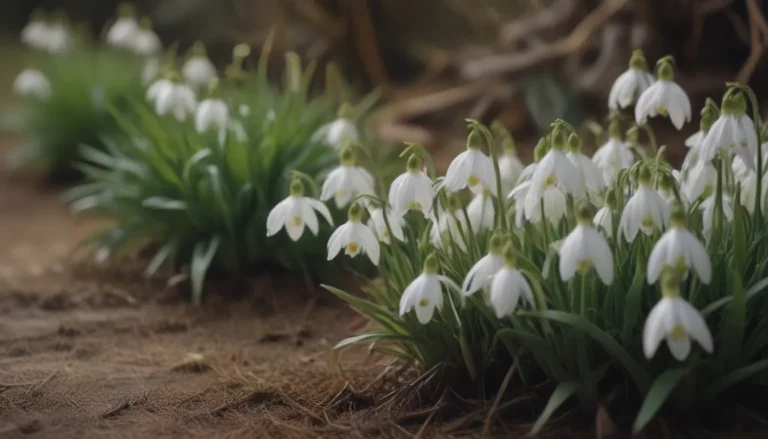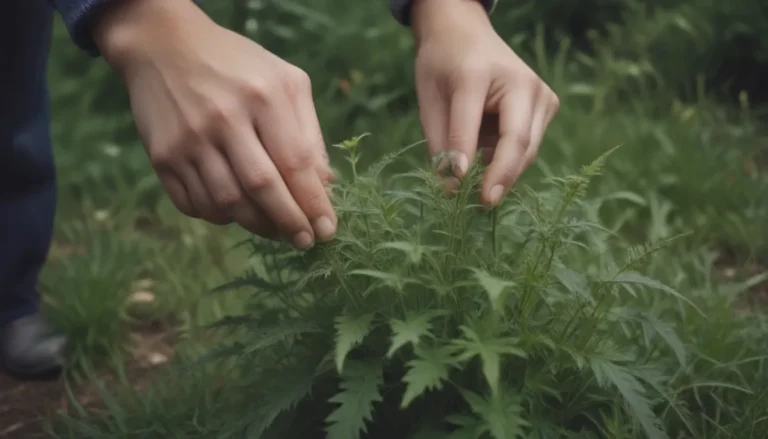A Comprehensive Guide to Planting, Growing, and Caring for Agapanthus

Welcome to our in-depth guide on how to plant, grow, and care for agapanthus, the vibrant bell-shaped perennial plants that add a pop of color to any garden. In this article, we will cover everything you need to know about these beautiful flowers, from planting and maintenance tips to different species and common problems you may encounter. Let’s dive in and explore the world of agapanthus together!
Agapanthus Overview
Agapanthus is a genus of six species of perennial plants with bell-shaped vibrant flowers. These flowers bloom from early summer to fall in shades of blue, pink, purple, and white, often with a darker center stripe on each petal. The blooms attract hummingbirds and are excellent cut flowers. Moreover, many agapanthus species are deer and rabbit resistant.
One important thing to note is that agapanthus is toxic to both humans and pets, so it’s essential to handle them with care.
Agapanthus Care
Caring for your agapanthus plants will depend on whether they are evergreen or deciduous. The biggest concern is protecting them during winter, especially in colder climates. Here are some essential care tips:
Evergreen Variety
- Evergreen types are more sensitive to cold temperatures.
- Consider providing winter protection, especially in USDA hardiness zones 7 through 10.
- In Northern zones, you can dig up the rhizomes of deciduous varieties in the fall and store them for spring.
Deciduous Variety
- Deciduous varieties can withstand occasional light frost.
- Frozen ground can damage the base of the plant.
- Consider planting them in pots for easier winter protection.
Planting Tips
- Plant agapanthus in the ground in autumn for USDA hardiness zones 9 and 10.
- In zones 7 and lower, plant in spring when soil temperatures reach 50 degrees Fahrenheit.
- Place rhizomes two inches deep and 12 to 18 inches apart, with the pointed end facing upward.
Light, Soil, and Water Needs
- Agapanthus requires full sun for six to eight hours daily.
- Best growth occurs in fertile, light, sandy loam soil with good drainage.
- Water regularly to provide 1 inch per week until plants are established.
Temperature, Humidity, and Fertilizer
- Ideal temperatures range from 50 to 60 degrees Fahrenheit.
- Avoid over-fertilizing with nitrogen as it can reduce blooms.
- Add a balanced fertilizer in spring and again two months later.
Types of Agapanthus
Agapanthus species are native to South Africa and have not been found growing naturally elsewhere. Hybridization is common, leading to many subspecies and cultivars. Here are a few popular types:
- Agapanthus africanus ‘Arctic Star’
- Agapanthus africanus ‘Bressingham Blue’
- Agapanthus praecox ssp. orientalis ‘Queen Mum’
- Agapanthus campanulatus var. patens F2 hybrid ‘Brilliant Blue’
Pruning and Propagating
Once flowers fade, remove the entire stem to promote repeat blooming. When propagating, division is the most reliable method. Here are some tips:
- Divide garden-grown plants every four to six years.
- Potted plants bloom better when root-bound.
- Dividing and re-potting every four to five years is ideal for potted plants.
How to Get Agapanthus to Bloom
Failure to bloom can be due to cold weather, lack of winter protection, and inadequate light. Here’s how to encourage blooming:
- Provide six to eight hours of sunlight daily.
- Add a fertilizer higher in phosphorus in spring.
- Move potted plants indoors or to a sheltered location for winter.
Common Problems and Solutions
Agapanthus plants are generally low maintenance but can face issues like yellowing leaves and reduced blooms. Here’s how to deal with common problems:
- Yellowing leaves in evergreen varieties are natural at the end of the growing season.
- Reduced blooms indicate the need for division and replanting.
Overwintering Agapanthus
Winter hardiness is a challenge for agapanthus, especially in colder climates. Here are some tips for overwintering:
- Evergreen types may need heavy mulching or indoor protection in colder zones.
- Deciduous varieties can be lifted in autumn and replanted in spring.
Common Pests and Diseases
Agapanthus plants are seldom bothered by insects but can attract aphids, mealy bugs, and red spider mites. Fungal diseases like verticillium wilt can also be a concern. Here are some tips for pest management:
- Treat severe infestations with horticultural or neem oil.
- Ensure good air circulation to prevent fungal diseases.
Potting and Repotting Agapanthus
Agapanthus grows well in pots and blooms best when root-bound. Here’s how to pot and repot your plants:
- Potted plants should be moved to larger containers every two years.
- Use a well-draining potting mix, and consider adding grit or coarse sand for improved drainage.
How to Grow Agapanthus From Seed
Seeds can be collected from mature pods and sown immediately. Keep in mind that plants grown from seed may take several years to bloom. Here’s how to propagate from seed:
- Gather seed trays and seed starting medium for successful germination.
Conclusion
In conclusion, agapanthus is a beautiful and versatile plant that can thrive in various climates and conditions. By following the tips and guidelines outlined in this article, you can enjoy vibrant blooms and healthy foliage year-round. Remember to care for your plants according to their specific needs, and you’ll be rewarded with a stunning garden filled with colorful agapanthus flowers. Happy planting!





